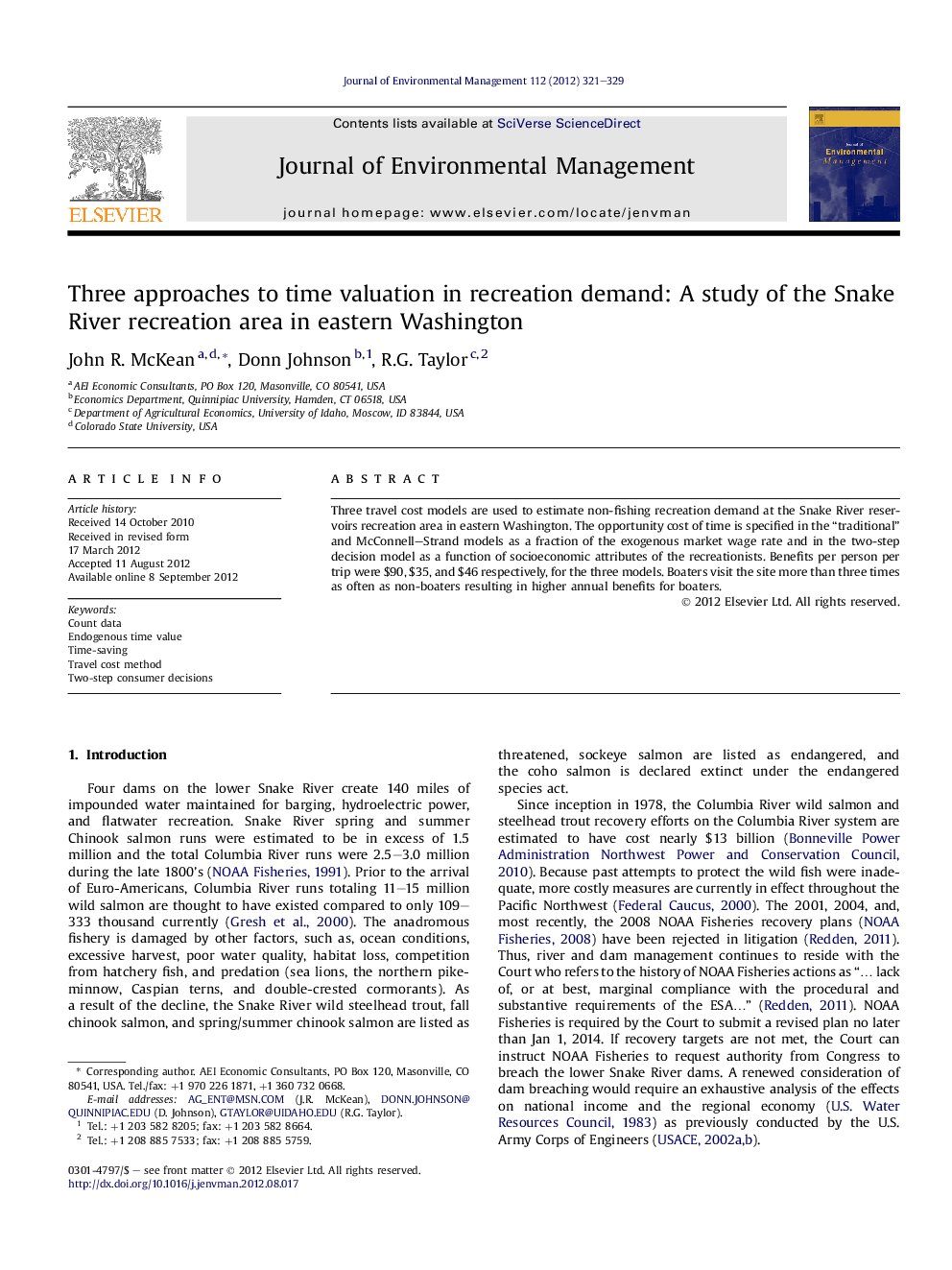| Article ID | Journal | Published Year | Pages | File Type |
|---|---|---|---|---|
| 1056436 | Journal of Environmental Management | 2012 | 9 Pages |
Three travel cost models are used to estimate non-fishing recreation demand at the Snake River reservoirs recreation area in eastern Washington. The opportunity cost of time is specified in the “traditional” and McConnell–Strand models as a fraction of the exogenous market wage rate and in the two-step decision model as a function of socioeconomic attributes of the recreationists. Benefits per person per trip were $90, $35, and $46 respectively, for the three models. Boaters visit the site more than three times as often as non-boaters resulting in higher annual benefits for boaters.
► A two-step decision travel cost model is compared to traditional methods to value nonmarket goods. ► Recreationist socioeconomic attributes determine the opportunity cost of time in the short run. ► Dam breaching increases the value of non-fishing recreation on the Snake River in Washington State.
